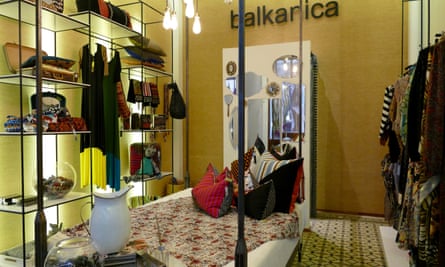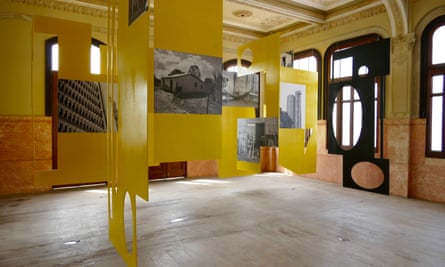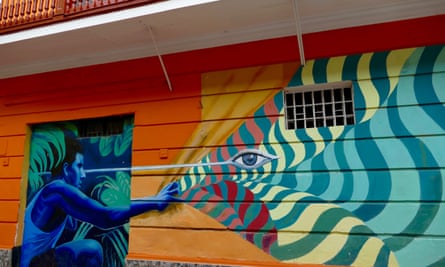A sign on the streets of Callao reads, Del puñal al pincel (from dagger to paintbrush). A couple of years ago, few visitors to Peru would have set foot here. More than just down-at-heel, this main port district of Lima was downright dangerous, notorious as a haunt of gangs smuggling cocaine worldwide.
Founded by conquistadors in 1537, Callao grew into the most important port in the Spanish colonies. It flourished in the 19th century, which saw the building of grand plazas and South America’s first railway. Its fortunes began to decline in the 20th century and historical monuments, such as the Real Felipe fortress, Plaza Grau and other architectural gems seemed destined for oblivion.

Then Fugaz stepped in. Roughly translating as shooting star, Fugaz is a private initiative by an Israeli businessman and art lover, which aims to restore Callao through art and culture, and offers locals an alternative to a life of theft and drug trafficking.
The transformation began with 18 artists, 15 walls and one fractured community. “We didn’t want the locals to feel like we were invading; we wanted them to join in. Especially as Callao is the only place in Lima where, when you die, a graffito of your face is painted on the grave,” Angie Pelosi from Fugaz told me.
Murals by local and international street artists now grace the walls but that was only the beginning of the new face of Callao Monumental, the historic centre. Artists, businesspeople and chalacos, as Callao residents are called, have all got involved: they include grandmother Cristina, whose children are all in prison, and Luis, better known as El Padre, who takes in street children.

All six floors of the crumbling Casa Ronald, built in the early 20th century by English-educated financier Guillermo Ronald, with cathedral-high ceilings and marble columns, has been restored by Fugaz and transformed into an arts hub. One of the curators, Andrés Marroquín Winkelmann, tells me of plans for more exhibitions later in the year, and to branch out into theatre and design.
Elsewhere in Callao, independent galleries such as Evolución and Bufeo have opened, design stores including Lima Modern and Balkanica are moving in, and leading sculptor Victor Delfin has set up shop there.
While artworks costing hundreds of dollars are aimed at the wealthy Limeños who are now discovering this formerly no-go barrio, the galleries all commit to working with the community and employing local people. Young chalacos work as guides and can attend creative workshops, life-coaching talks, Muay Thai classes for those that perform well at school and English lessons.

The change in Callao has been remarkable, with crime reported to have fallen dramatically. “I’ve noticed how people are coming together,” Pelosi says. “They’re starting to care about their community. Even the police have seen an improvement.”
Teenager Yarel Jiménez shows me around Micromuseo, a new gallery in the former public records office. As we look at Yigal Ozeri’s hyperrealist paintings of local characters, he says: “Just because our parents are involved in crime and drugs doesn’t mean we can’t change things.”

Comments (…)
Sign in or create your Guardian account to join the discussion